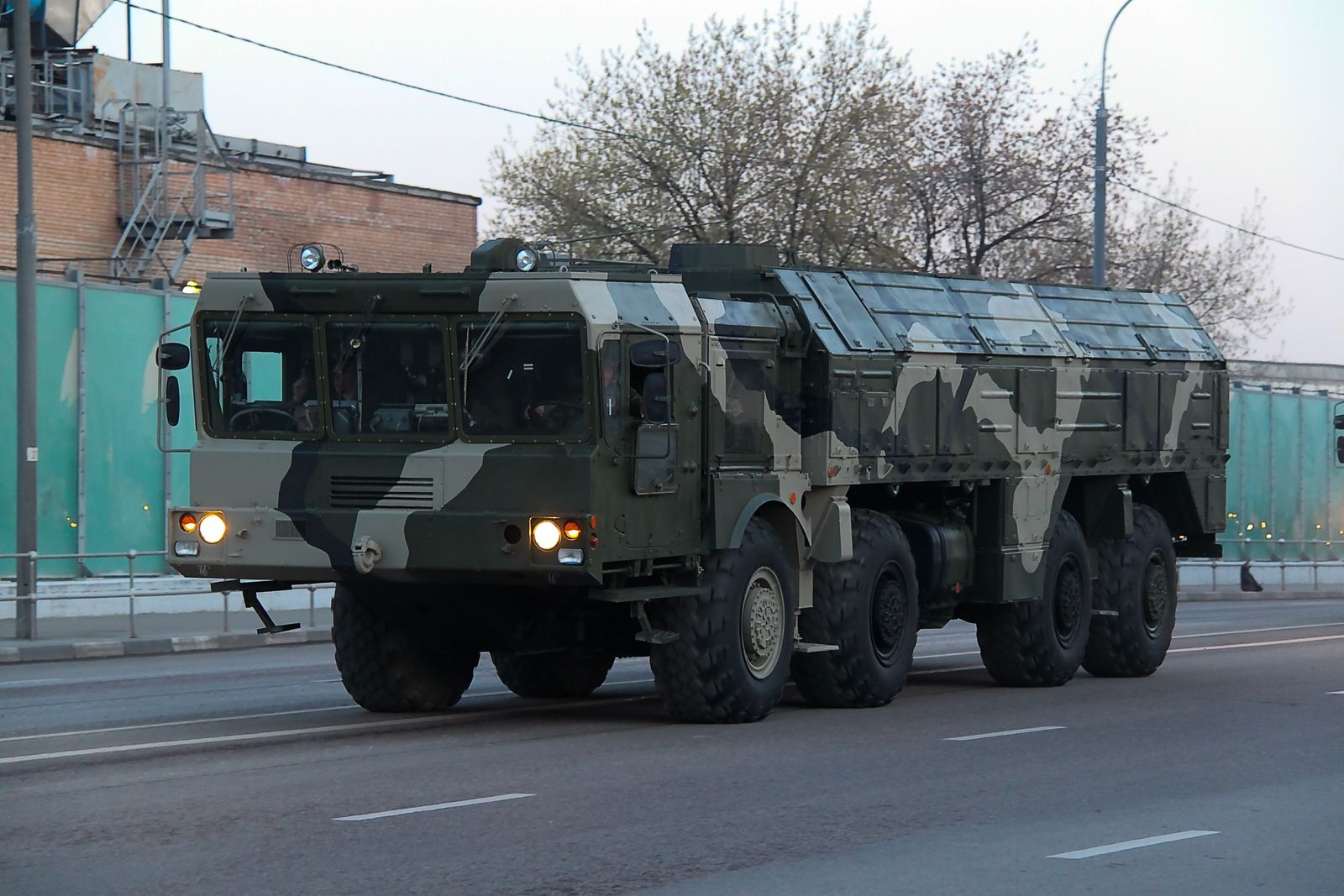Russia has reportedly deployed a large number of Iskander-M short-range ballistic missile (SRBM) systems in areas bordering Ukraine, adding fresh fuel to the ongoing tension between the two neighbors.
The latest intelligence assessment, which was shared with CNN, by the Ukrainian Ministry of Defense suggests that the Russian military build-up is “almost completed”. It singles out the Iskander-M as a key weapon system that would be employed to “destroy vital objects” if Moscow launches a new invasion against Ukraine.
The biggest concern for the west is that the Iskander can be equipped with tactical nuclear warheads and it can strike deep into Europe.
Калужська обл. 18.01.2022 pic.twitter.com/HSYIb1H6N9
— 4emberlen (@4emberlen) January 18, 2022
According to the Ukrainian Ministry of Defense, there are currently 36 Iskander launchers close to the border; Ukraine’s capital, Kyiv as well as numerous other key military installations is within the strike range of these missiles.
While Iskander-M is a short-range ballistic missile (SRBM) system, another variant, Iskander-K, fires cruise missiles.

The report further noted that “additional tactical groups of ‘Iskander’ operational-tactical missiles” have been moved towards the border.
Several videos have gone viral on social media, showing system parts, including additional 9M723 missile reloads being carried by train and seen in open-top railcars as they pass through Kaluga, roughly 90 miles southwest of Moscow.
The report also indicated that Russia’s actions are “aimed at limiting the capabilities of the United States.” The assessment comes after Russia and the West failed to reach an agreement last week despite three rounds of diplomatic discussions aimed at de-escalating the crisis.
Iskander ballistic missiles on the move in the Sverdlovsk region. This missile system can carry conventional or nuclear warheads. Monday, the New York Times reported the US is "particularly interested in indications" that Russia may deploy nuclear weapons to the Ukraine border. pic.twitter.com/js0UiV3zce
— gandalf greybeard (@gerrydogma) January 13, 2022
Another big cause of concern for Ukraine and its NATO allies is the upcoming exercise between Russia and Belarus that will take place along the latter’s southern and western borders, near Ukraine and Poland, in February.
For the first phase of the exercise, 12 Sukhoi Su-35 fighter jets, two S-400 anti-air missile systems, and a Pantsir missile system will be dispatched to Belarus, according to media reports.
Additionally, there are 35,000 Russia-backed separatists in eastern Ukraine and has approximately 3,000 military personnel stationed there. Moscow, however, denies having troops stationed in Ukraine’s east.
Iskander-M System
The Iskander-M was inducted by the Russian Army in 2006. The system, (NATO reporting name SS-26 Stone) unleashes 9M723 ballistic missiles with a range of 310 miles and beyond.
It uses a maneuverable reentry vehicle (MaRV) and decoys to bypass theater missile defense systems and can carry conventional and nuclear warheads weighing up to 700 kg. Cluster warheads, fuel-air explosives, bunker-busters, and electromagnetic pulse (EMP) warheads are among the conventional warheads that the Iskander can carry. It can also carry nuclear warheads.
The Iskander-M has a self-contained inertial navigation system (INS) as well as an optically guided warhead. The optical homing head can be controlled by an airborne warning and control system (AWACS) or an unmanned aerial vehicle (UAV).
The first combat use of the missile was in the 2008 Russo-Georgian War — the Russian Army used several conventionally armed Iskander-Ms to strike targets in Gori, Georgia. The export-oriented Iskander-E variant has a range of 280 kilometers and a warhead capacity of 480 kg. This version, like the Iskander-M, features an inertial guidance system that gives it effective accuracy. Iskander-E is exported to Syria.
The missile system uses a road-mobile transporter erector launcher (TEL) that can carry up to two missiles, each of which can be independently targeted and change targets while in flight.
The TEL is accompanied by a loader-transporter, regular maintenance vehicle, command post vehicle, information post, ammunition equipment set, and training aids. The Iskander is equipped with a variety of in-flight correction and self-targeting capabilities, allowing it to avoid missile defense systems.
The Iskander-K is the latest missile in the series. The R-500 cruise missile is part of the missile system. It was first fired in May 2007 from the mobile Iskander platform. At elevations of 100 meters, it reached a speed of about 250 meters per second.
Each Iskander-M brigade typically has 12 9P78-1 launchers which means 36 launchers=3 brigades. I think they likely have 4(+) brigade’s worth including launchers at Kapustin Yar and and from the 41st CAA. We’ve also seen more Iskander-M on the move. 631/https://t.co/jy0PB7EMjt pic.twitter.com/z2MijueXhS
— Rob Lee (@RALee85) January 19, 2022
If Moscow chooses to conduct a large-scale operation against Ukraine, a barrage of missiles launched from Iskander-M systems will probably destroy crucial Ukrainian defensive equipment. With only a few Soviet-era S-300V anti-ballistic systems at Ukraine’s disposal, Russian Iskanders could cause havoc in the country if a war breaks out.
- Contact the author at ashishmichel@gmail.com
- Follow EurAsian Times on Google News




